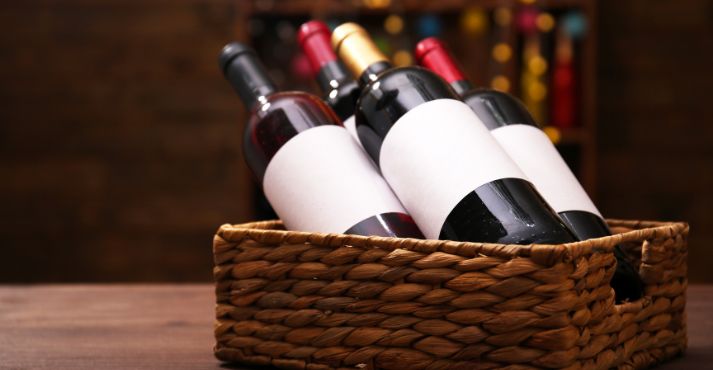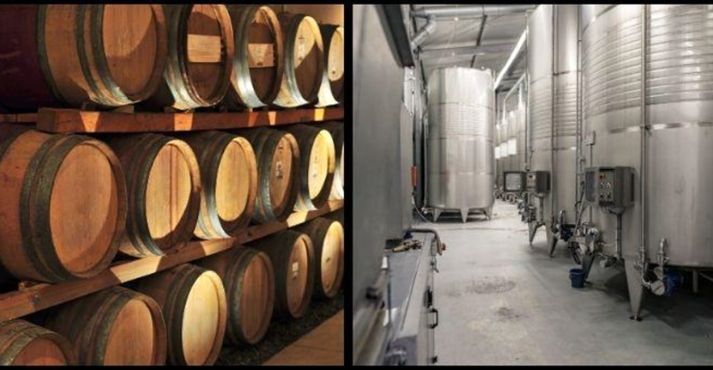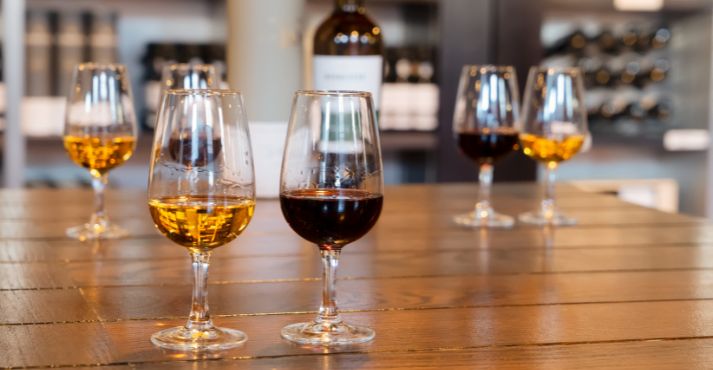Today, we will explore the world of Old World vs. New World wine. This article will examine the critical distinctions between tradition-rich Old World wines and their innovation-driven New World counterparts.
Old World wines, rooted in heritage, emphasize terroir and timeless practices. In contrast, New World wines embrace grape variety and modern techniques, resulting in bold, fruit-forward flavors.
Understanding these differences is essential for wine enthusiasts, providing a straightforward steer to appreciate the nuances in each glass.
Let’s dive into this immediately as we uncover the core differences that shape the experience of Old World vs. New World wines. Cheers to unraveling the essence of tradition and innovation in every sip!
5 Differences Between New World & Old World Wines
Before we jump into the differences, let’s get the basics. Old World wines are like the classics with a long history, while New World wines are more modern, trying new things. Think of it like comparing traditional family recipes to the latest food trends.
Now, let’s discuss their differences and examine what the wine market analysis says about these two types. Ready to explore the world of Old World and New World wines? Let’s dive in!
1. How They’re Named (Labeling)

Understanding how they are named in the world of wine provides critical insight into new-world vs. old-world wine traditions.
Old World Labeling:
- Wines in the Old World are often named after regions, such as Bordeaux or Burgundy.
- This regional focus reflects a traditional terroir-based approach.
New World Labeling:
- In the New World, wines prominently display grape varieties, like Cabernet Sauvignon or Chardonnay.
- This direct connection simplifies the selection process for consumers.
Simplifying Selection:
- The straightforward naming approach in the New World serves as a guide for consumers.
- It allows an easier understanding of the taste based on the displayed grape variety.
Understanding Terminology: New World and Old World Wines
Natural Wines in New World Regions:
- Some New World regions use terms like “natural wines.”
- This emphasizes minimal intervention in the winemaking process.
Roadmap for Consumers:
- Labeling conventions act as a roadmap for consumers in both Old World and New World regions.
- They help discern the origin, quality, and style of wines, aiding in informed decision-making.
2. Terroir and Geography
Understanding how wine is made involves looking at two main approaches – Old World and New World.
Old World:
In places following the Old World style, like Burgundy in France or Tuscany in Italy, they focus a lot on terroir. This means they care about how the soil, weather, and location affect the taste of the wine. So, wines from these areas show off the unique character of their origins.
New World:
On the other hand, in the New World, places like Napa Valley in California or Marlborough in New Zealand are more flexible. They make wine in different climates and landscapes. For example, Napa Valley makes robust Cabernet Sauvignon wine because of its warm climate and varied land.
Impact on Health Trends:
Both old and new-world winemakers are adapting to what people want nowadays. They use organic farming to make the wine, responding to health trends in the beverage industry and what consumers want in their drinks.
3. Winemaking Techniques

Traditional winemaking in Old World regions, such as France and Italy, is steeped in time-honored techniques:
Grape Variety and Terroir Focus:
- Like those in Bordeaux and Tuscany, Old World winemakers prioritize the interaction between grape varieties and terroir.
- This emphasis contributes to wines that intricately express the region’s unique characteristics.
Oak Aging Traditions:
- Oak barrels play a significant role in traditional winemaking, adding subtle complexities to the final product.
- For example, in Bordeaux, oak is a longstanding practice contributing to the region’s distinctive wine profile.
- In contrast, New World countries like the United States and Australia have embraced more modern winemaking approaches:
Innovative Techniques:
- New World winemakers adopt advanced technologies and precise fermentation control, particularly in Napa Valley and Barossa Valley.
- Stainless steel tanks are increasingly favored, allowing for a more controlled winemaking process.
These differing techniques significantly contribute to variations in flavor profiles, with Old World wines often exhibiting a more restrained and balanced character, reflecting traditional methods.
In contrast, New World wines showcase a broader spectrum of flavors influenced by contemporary winemaking practices.
4. Wine Varietals
Wines have their main characters, the grape types, which differ in Old World and New World styles.
Old World:
Old World wines stick to classic grapes like Pinot Noir and Chardonnay. Consider Burgundy in France as a master of these classics, shaping their unique tastes for a long time.
New World:
In places like California and Australia, they go big on favorites like Cabernet Sauvignon and Sauvignon Blanc. Here, they focus more on showing off the specific grape flavors people like.
Why It Matters:
Old World classics have flavors shaped by tradition, while New World wines aim to give you the bold tastes you love.
Each place has its unique recipe, making the world of wines rich with different flavors. So, when you hear about Old World and New World wines, it’s like comparing the classics with the newcomers, each bringing its unique style to the table.
5. Flavor Profiles

Like a story in a glass, wine reveals its origin through distinct flavors. Old World wines from places like Bordeaux or Chianti Classico are known for their elegant taste.
They often carry subtle complexities – a blend of earthy tones and restrained fruitiness. Experts describe these wines as “terroir-driven” and “balanced.”
Conversely, New World wines boast boldness in regions like Napa Valley or Barossa Valley. Tasting them is like a burst of ripe fruits – blackberries, plums, and tropical notes dominate. These wines often showcase modern winemaking techniques, featuring vibrant and fruit-forward profiles.
Climate plays a crucial role in shaping these flavors. Old World regions, with cooler climates, produce wines with higher acidity and nuanced flavors. New World areas, enjoying warmer conditions, yield wines with riper and more expressive fruit characteristics.
Grape varieties contribute to the flavor profiles. Old World wines feature Pinot Noir and Chardonnay, offering a refined and age-worthy experience. In the New World, with Cabernet Sauvignon or Sauvignon Blanc, the focus is on youthful excitement and immediate enjoyment.
Tradition in Old World winemaking imparts a historical touch to the flavors. New World winemakers, unrestricted by tradition, embrace experimentation, appealing to a generation seeking novelty.
Harmony of Old World Wines:
Old World wines pair seamlessly with traditional dishes, enhancing the flavors and creating a harmonious dining experience.
The versatility of New World Wines:
New World wines thrive alongside diverse cuisines, allowing for creative and unconventional pairings and showcasing their versatility.
In the Old World vs. New World wines narrative, it’s not just about taste; it’s a tale of heritage, innovation, subtlety, and boldness.
As you explore each glass, consider the history shaping Old World elegance and the modern energy defining New World boldness – a journey through vineyards, climates, and cultures.
Conclusion
In the world of wine, it’s like choosing between timeless classics and bold newcomers when discussing Old World vs. New World wines. Old World wines, with their ancient methods, tell tales of terroir and timeless charm.
On the flip side, New World wines are all about the modern vibes, bursting with lively fruit flavors and a bit of experimentation.
Each sip is like taking a journey through old, earthy vineyards or exploring the cutting-edge side of winemaking. Deciding between Old World vs. New World wine isn’t just about taste; it’s like traveling through history and today’s trends.
Whether you enjoy the subtlety of the classics or the excitement of the new, the world of wine is a diverse and ever-changing adventure. Cheers to the battle of traditions and the constant innovation in the wonderful world of wines!






























